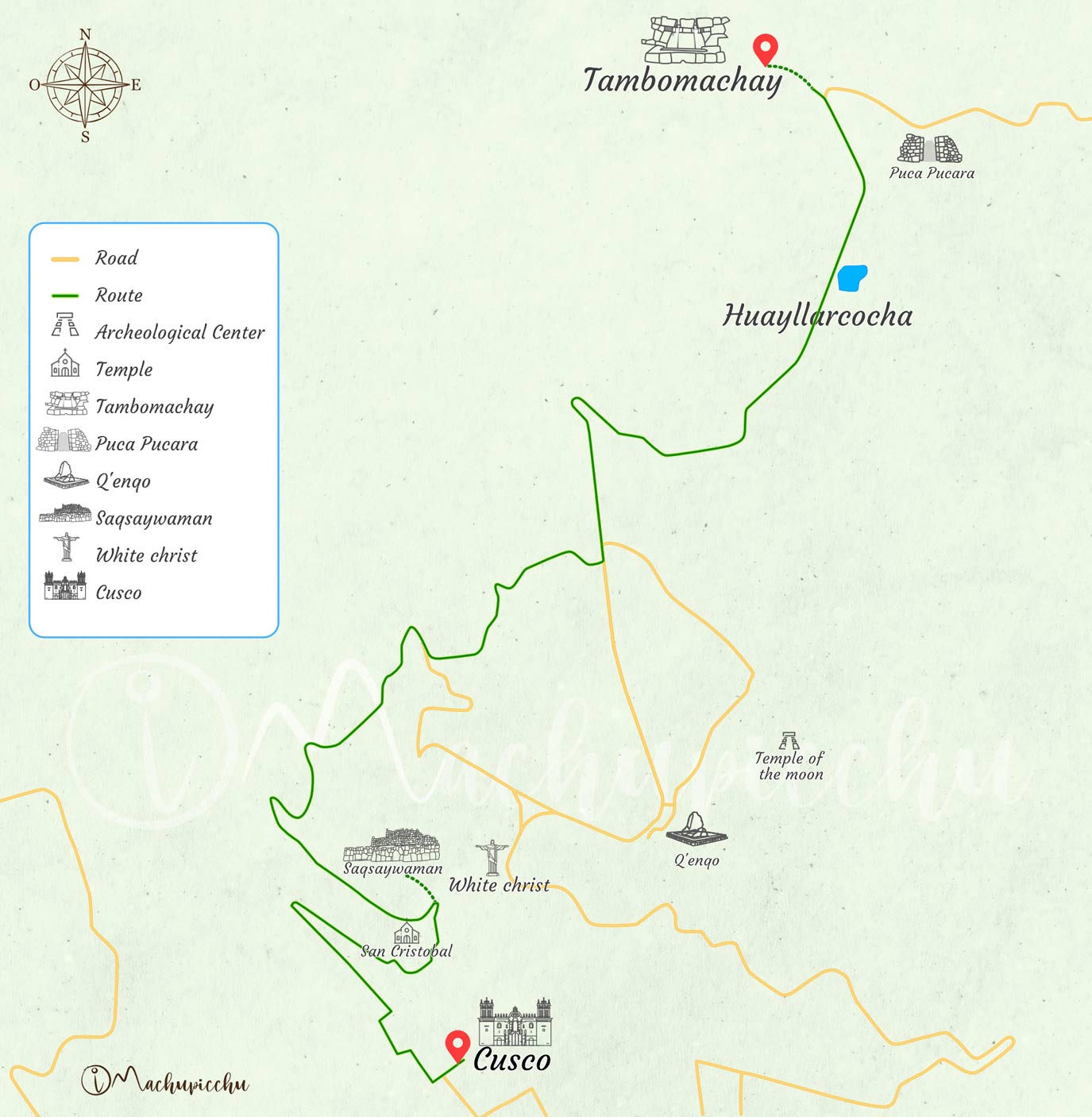Tambomachay: interesting facts
The archaeological site of Tambomachay, is together with Qenqo, Puca Pucara and Sacsayhuaman, one of the most important archaeological complexes in the city of Cusco. It is located only 7 kilometers from the ancient capital of the Incas. Due to its location, it belongs to one of the important centers in the ‘ceques’ or imaginary lines that started from Cuzco and served the Incas to organize their sanctuaries and important centers. Its function was to provide water to nearby sites and as Inca baths. The harmony that exists between its stone walls and the nature that surrounds it makes it one of the most important places in the Inca period. Learn some interesting facts about this archaeological site.
- What does Tambomachay mean?
- Inca hunting place
- The Inca baths
- Adoratory to the water
- Where does the water come from?
- Map to get to Tambomachay
- Harmony with the environment
- Perfection in handling stone

Tambomachay archaeological complex
The entrance to the archaeological site of Tambomachay and other archaeological centers (Qenqo, Pucapucara and Tambomachay) is included in the Tourist Ticket of Cusco. You can buy this ticket in the authorized offices of the city of Cusco. Visiting hours to Tambomachay are from 07:00 am to 06:00 pm The site remains open every day of the year, except for unforeseen emergencies.
What does Tambomachay mean?
- Although there is no accurate definition, it is believed that Tambomachay comes from 2 Quechua words: ‘Tampu’ (collective accommodation) and ‘Mach’ay (resting place).
- This definition would explain the function it had as ‘Inca Baths’ and water shrine. However, other studies indicate that ‘Machay’ means ‘Caverns’.
- This also makes sense due to the rock formations that stand out in the archaeological site.
- According to the Inca worldview, these rock formations were sites that connected with the world of the dead. In any of the cases, Tambomachay was a place that enjoyed enormous importance during the Inca Empire.
Inca hunting place
- Tambomachay is located at 3,700 meters above sea level (masl).
- Due to its altitudinal location on the slopes of a mountain and on the river of the same name, it is presumed that in the past there was abundant Andean fauna in the place.
- It is for this reason that some chroniclers assure that the enclosure was the hunting area of the Inca Túpac Yupanqui. Among the non-domesticated animals that lived in the Andes, the vicuña and the guanaco stand out.
The Inca baths
- Tambomachay is one of the best examples of the skill of the Incas in handling water.
- The enclosure presents water channels made of carved stone that end in two slopes where crystal clear water flows every day of the year.
- There is a platform that served as a liturgical fountain and, probably, Inca baths.
- In allusion to this well of pure water and due to the expertise of the builders to subtract transparent water in Tambomachay, the entire archaeological site was called ‘The Inca baths’ or the ‘Baños de la Ñusta’.
Adoratory to the water
- As well as Tambomachay, the Incas dedicated special interest in their constructions to the use of water in other important areas such as the Ollantaytambo fortress, the Inca citadel of Machu Picchu; but above all the temple of Tipón, which is considered a masterpiece of Inca hydraulic engineering.
- According to the Andean worldview, water was a source of life. It was believed that this symbolized the masculine and the earth (pachamama) the feminine, so the union of both caused fertility.
- The network of channels that filtered water in Tambomachay poured the liquid into a platform at the bottom where the Inca worshiped water.

Inca baths
Where does the water come from?
- Tambomachay was built on a river, springs and streams.
- Although it is not known for sure where exactly the water that flows in its channels comes from, the magnificent distribution of the liquid amazes the world.
- These follow a cascading uneven course in equal proportion in such a way that none of the liquid element is wasted.
- It is believed that the Incas calculated the water flow in the canals so that they do not collide. Whether or not it was so, these constructions continue to flow water after 600 years.
Map to get to Tambomachay
Harmony with the environment
- The archaeological site of Tambomachay is located under the protection of a chain of mountains and over rivers and underground springs.
- The nature that surrounds it is characterized by the abundance of ichu, a natural grass that grows in altitude zones. In certain seasons the ‘cantu’ grows, a flower of various colors.
- The construction of the enclosure was in harmony with its surroundings. The murmur of the water flowing on the stone walls provides an ideal resting environment.
- It is no coincidence that the Inca chose this place as his resting place. Some tour guides call it the ‘spa of the Inca’.

Natural environment surrounding Tambomachay
Perfection in handling stone
- Tambomachay’s hydraulic systems were finely carved for the perfect fluidity of the water.
- In addition, the enclosure has four walls in the form of terraces arranged in a main complex. There the stones were carved and assembled irregularly but with such perfection that they still stand upright after almost 600 years.
- The main wall is located at the top. This construction consists of 4 trapezoidal niches of up to 2 meters. Due to the height of these walls, it is presumed that they also served as defense against possible enemy attacks.
- These techniques in the handling of the stone are also observed in the archaeological centers of Qenqo, Puca Pucara and Sacsayhuaman, all included in the Cusco City Tour.
By Ticket Machu Picchu – Last updated, August 15, 2024
